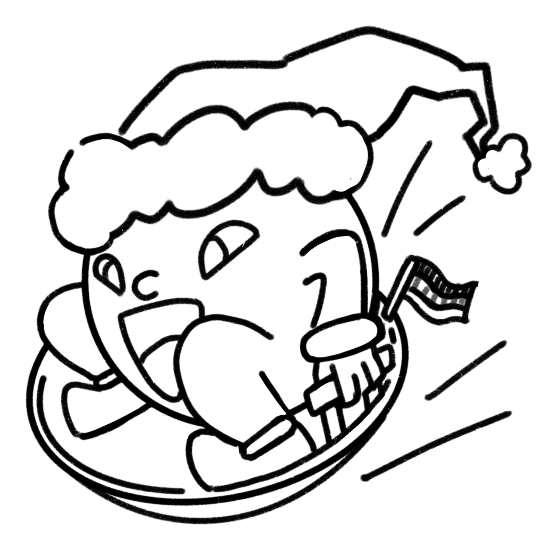Wok Racing
Some winter sports have to be seen to be believed. Such is the case with Wok Racing. Every year, athletes, TV personalities, and other minor celebrities meet in Germany at the annual Wok World Cup. They race down bobsleigh tracks in authentic Chinese woks. Wok pros compete solo, or in teams, riding four woks strapped together to create a woksled capable of reaching 75mph. Competitors wear helmets and heavy protected clothing in case of wok-accidents, and strap soup ladles (which are basically tiny woks) to their feet.
Since its creation in 2003, the championship has continued to draw in crowds of enthusiastic fans and major sponsorships. The event has a wide range of participants. Some are former olympic athletes who competed in bobsled, skeleton or luge, the most similar sports to wok racing. Others are musicians, television hosts, actors, and even professional athletes from completely unrelated sports.
Ski Ballet
Somewhere in between skiing, figure skating and acrobatics, ski ballet – also known as acroski – is magical to watch. Performers do spins and flips, at times skiing on one leg or even lifting themselves into the air on their poles. Competitions are very similar to figure skating, where competitors perform choreographed routines to music, and are given scores by judges.
It was featured in two winter Olympics, 1988 and 1992, as a demonstration sport with no medals. Since then the sport has declined in popularity, with fewer and fewer competitions being held.
Professional Snowball Fighting
Yukigassen, which translates to snow war, is a Japanese team sport that has been around since 1989. Two teams of seven players face off on a field the size of a basketball court, and any player hit by a snowball is eliminated. A yukigassen match is divided into three sets. Each set is won by the team that eliminates more of the other team’s players or picks up the flag of the opposing team. Before the set, the referees ensure that each team has exactly 90 snowballs and that they are all between 6.5 and 7 centimeters in diameter. A match that ends in a tie is decided by a victory shoot, where players throw snowballs at a target. Yukigassen tournaments are held annually in Sōbetsu, Japan, Vardø, Norway, and Kemijärvi, Finland.
Skeleton
Similar to bobsledding and luge, skeleton is a sport where athletes sled downhill headfirst on their stomachs, with their faces and limbs hanging an inch above the ice. Unlike the other two types of sledding, skeleton sliders have very little control over their movement as they hurtle over the ice at speeds of up to 90 mph. The only methods of steering available to them are to shift their body weight on top of the sled or tap their toes on the ground. At the start of a race, they have 65 meters to sprint and build up speed before they surrender themselves to the ice.
Despite the inherent dangers, helmets are usually the only protective equipment worn. Athletes endure forces of up to five g’s as they go around turns, which keep them from lifting their heads up. New research suggests that they may even suffer brain damage over time from the vibrations of the sled.





